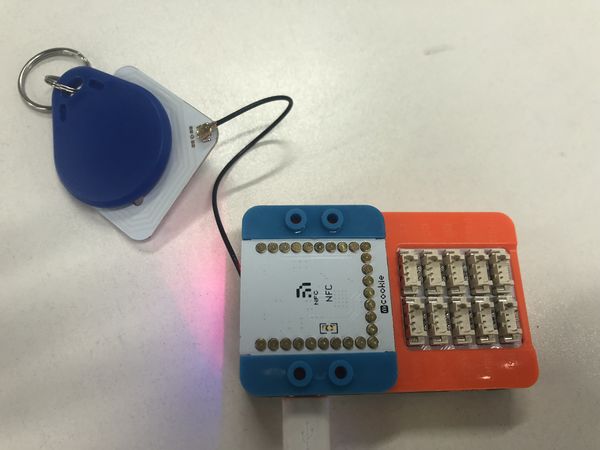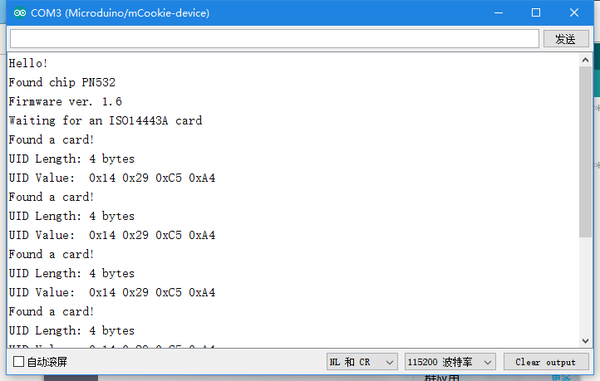识别标签ID
|
识别标签ID
所需硬件
电路搭建 将Battery+、Core+、MCookie_SD、MCookie-NFC堆叠在一起,通过MicroUSB数据线接入电脑。
代码 #include <Microduino_NFC.h>
#define IRQ (D2)
NFC nfc(IRQ);
void setup(void)
{
Serial.begin(115200);
Serial.println("Hello!");
uint32_t versiondata = nfc.begin();
if (! versiondata)
{
Serial.print("Didn't find PN53x board");
while (1); // halt
}
// Got ok data, print it out!
Serial.print("Found chip PN5");
Serial.println((versiondata >> 24) & 0xFF, HEX);
Serial.print("Firmware ver. ");
Serial.print((versiondata >> 16) & 0xFF, DEC);
Serial.print('.');
Serial.println((versiondata >> 8) & 0xFF, DEC);
// Set the max number of retry attempts to read from a card
// This prevents us from waiting forever for a card, which is
// the default behaviour of the PN532.
nfc.setPassiveActivationRetries(0xFF);
Serial.println("Waiting for an ISO14443A card");
}
void loop(void)
{
boolean success;
uint8_t uid[] = { 0, 0, 0, 0, 0, 0, 0 }; // Buffer to store the returned UID
uint8_t uidLength; // Length of the UID (4 or 7 bytes depending on ISO14443A card type)
// Wait for an ISO14443A type cards (Mifare, etc.). When one is found
// 'uid' will be populated with the UID, and uidLength will indicate
// if the uid is 4 bytes (Mifare Classic) or 7 bytes (Mifare Ultralight)
success = nfc.readPassiveTargetID(PN532_MIFARE_ISO14443A, &uid[0], &uidLength);
if (success)
{
Serial.println("Found a card!");
Serial.print("UID Length: ");
Serial.print(uidLength, DEC);
Serial.println(" bytes");
Serial.print("UID Value: ");
for (uint8_t i = 0; i < uidLength; i++)
{
Serial.print(" 0x");
Serial.print(uid[i], HEX);
}
Serial.println("");
// Wait 1 second before continuing
delay(1000);
}
else
{
// PN532 probably timed out waiting for a card
Serial.println("Timed out waiting for a card");
}
}
到这一步就可以简单的形成一个NFC标签控制应用的基础了,通过识别正确的UID执行对应功能。 |

